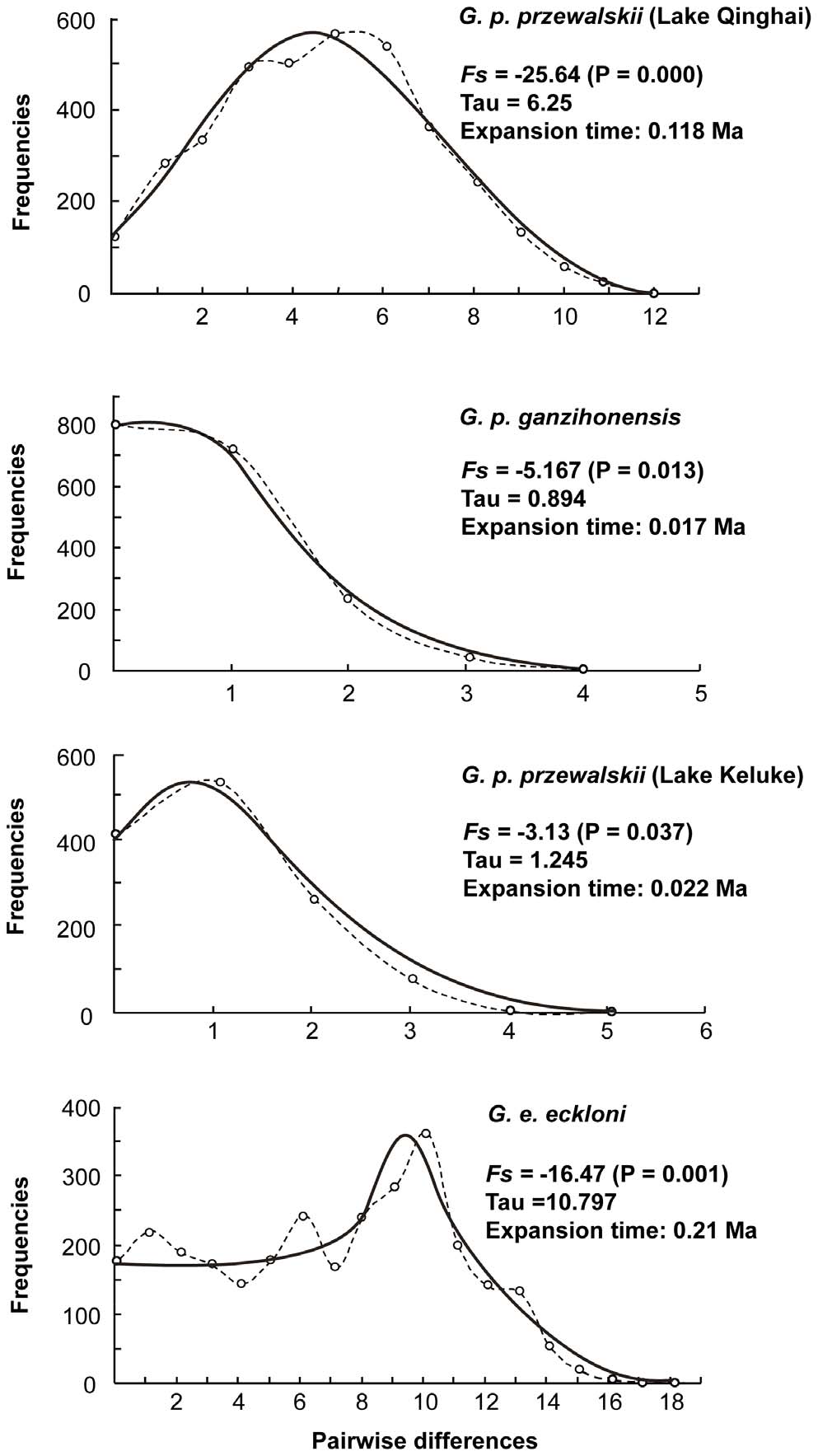Zhao Kai and his team studied a Gymnocypris species complex consisting of three morphs distributed across four bodies of water (the Yellow River, Lake Qinghai, the Ganzi River and Lake Keluke) in the Northeast Tibetan Plateau.
They used a combination of mitochondrial (16S rRNA and Cyt b) and nuclear (RAG-2) genetic sequences to investigate the phylogeography of these morphs based on a sample of 277 specimens.
Analysis of gill rakers allowed for mapping of phenotypic trajectories along the phylogeny.
The phylogenetic and morphological analyses showed that the three sparsely rakered morphs were present at two extremes of the phylogenetic tree: the Yellow River morphs were located at the basal phylogenetic split, and the Lake Keluke and Ganzi River morphs at the peak, with the densely rakered Lake Qinghai morphs located between these two extremes.
Age estimation further indicated that the sparsely rakered morphs constituted the oldest and youngest lineages, whereas the densely rakered morph was assigned to an intermediate-age lineage.
These results are most compatible with the process of evolutionary convergence or reversal. Disruptive natural selection due to divergent habitats and dietary preferences is likely the driving force behind the formation of new morphs, and the similarities between their phenotypes may be attributable to the similarities between their forms of niche tracking associated with food acquisition.
This study provides the first genetic evidence for the occurrence of convergence or reversal in the schizothoracine fish of the Tibetan Plateau at small temporal scales.

Figure. Mismatch distributions of Gymnocypris individuals based on the combined sequence data.
Additional Information:
1 Author Information: Renyi Zhang, Zuogang Peng, Guogang Li, Cunfang Zhang, Yongtao Tang, Xiaoni Gan, Shunping He, Kai Zhao
Correspondence: zhaokai@nwipb.cas.cn
2 Published: PLoS ONE 8(8): e71331. doi:10.1371/journal.pone.0071331
